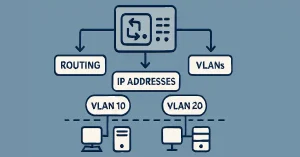Unlock Layer 3 Switches Mastery: Essential Cisco Guide for CCNA and CCNP Success in 2025
In the world of networking, understanding the OSI model’s Layer 3 is crucial for anyone preparing for CCNA (200-301) or CCNP Enterprise. This layer, known as the Network layer, handles logical addressing using protocols like IP and is responsible for packet forwarding between different networks, including path determination and routing through intermediate devices like routers. […]

